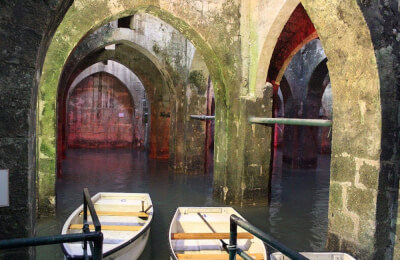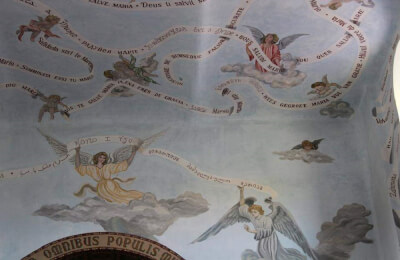
126. Excursion to Ramle - Lod Promotion
 165₪
165₪
 165₪
165₪
We also found excursions from other cities that are close to your departure city
Other excursions that also deserve your attention
to the White Mosque in Ramla
The White Mosque, located in the ancient city of Ramla in central Israel, is a monument that stands as a silent testament to the city's rich multicultural past. Ramla, once a prosperous center during the early Islamic period, harbors this mosque, also known as the Al-White Mosque or the Great Mosque, which was one of the most significant Islamic structures in the region and an important architectural feat.
The Historical Significance of the White Mosque
The White Mosque's history dates back to the 8th century when the Umayyad caliph Suleiman ibn Abd al-Malik founded the city of Ramla. The mosque was constructed during the reign of his successor, Caliph Hisham ibn Abd al-Malik, and was later completed by his nephew Caliph Al-Walid I. The White Mosque is often cited as one of the earliest examples of Islamic architecture in the area, making it an invaluable site for understanding the evolution of Islamic art and architecture.
Architectural Features of the White Mosque
The mosque's initial structure featured a vast prayer hall, a courtyard, and a series of arches and columns, reflecting the classical Islamic architectural style. One of the most distinctive features of the White Mosque was its minaret, which is said to have been the tallest in the region at the time it was built. Although the minaret has suffered damages over the centuries, it remains an iconic part of Ramla's skyline.
Interesting Facts About the White Mosque
- **Color and Craftsmanship**: Contrary to its name, the White Mosque was not originally white. It earned its moniker after a 19th-century renovation when it was covered with white limestone. - **Cultural Melting Pot**: Over time, the mosque has served not only as a place of Muslim worship but also as a host for various other communities, including the Crusaders and the Ottomans, who added their own touches to the structure. - **The Underground Water Reservoir**: Beneath the mosque lies a large underground water reservoir, a testament to the ingenuity of ancient engineering. The reservoir could be accessed by a series of steps, allowing the community to utilize the resource efficiently. - **The Tower of Forty Martyrs**: The minaret is also known as the Tower of the Forty Martyrs, a reference to a legend involving the burial of forty of Tariq ibn Ziyad's soldiers who supposedly died in the area.
The Role of the White Mosque in the Community
Throughout its history, the White Mosque has played a pivotal role in the spiritual and social life of Ramla. It served not only as a place of worship but also as a community center where people gathered for education, legal matters, and social activities.
Preservation and Restoration Efforts
Over the centuries, the White Mosque has faced natural disasters, including earthquakes, which led to significant damage. Efforts to preserve and restore the mosque have been ongoing, with several projects undertaken to ensure that this historical edifice continues to stand. The restoration efforts have allowed the mosque to retain much of its original charm and grandeur, while also providing insights into historical construction techniques.
The White Mosque as a Symbol of Ramla's Heritage
The White Mosque is more than just a religious site; it is a symbol of the city's history and heritage. It stands as a reminder of Ramla's importance as a cultural and trade hub throughout the centuries and its role in the broader narrative of the region's history.
The Mosque in Contemporary Times
In today's context, the White Mosque remains a focal point of Ramla's Old City. Although no longer used for daily prayers, it attracts numerous visitors who are interested in its historical and architectural significance. The site serves as an educational resource for both locals and tourists, offering a window into the Islamic era of the Levant.
Ecumenical Relevance of the White Mosque
The history of the White Mosque mirrors the broader historical ecumenism of the region. It has seen different faiths and cultures, each leaving its mark and contributing to the complex tapestry that defines Ramla. The mosque thus stands as a testament to the region's ability to absorb and reflect diverse religious and cultural influences.
Challenges in the Modern Era
Like many historic sites, the White Mosque faces the challenges of modernization and urban development. Balancing the need for preservation with the city's growth requires sensitive planning and a commitment to maintaining the mosque's integrity as a historic monument.
Conclusion: The White Mosque's Place in Israel's Landscape
The White Mosque in Ramla is a treasure of Islamic architecture and a significant historical site in Israel. Its walls and foundations tell the story of a bygone era and reflect the cultural and religious diversity that has shaped the region. As a piece of living history, it provides an essential link to the past and offers a space for reflection on the journey of human civilization in this storied land. The White Mosque's resilience and continued relevance stand as a proud reminder of the enduring legacy of the cultures that have thrived in the Levant.





